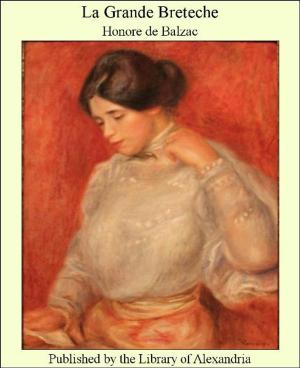The Croxley Master: A Great Tale of the Prize Ring
Nonfiction, Religion & Spirituality, New Age, History, Fiction & Literature| Author: | Sir Arthur Conan Doyle | ISBN: | 9781465519795 |
| Publisher: | Library of Alexandria | Publication: | March 8, 2015 |
| Imprint: | Language: | English |
| Author: | Sir Arthur Conan Doyle |
| ISBN: | 9781465519795 |
| Publisher: | Library of Alexandria |
| Publication: | March 8, 2015 |
| Imprint: | |
| Language: | English |
WHAT is genius? Is it not both masculine and feminine? Are not some of its qualities instinct with manhood, while Others delight us with the most winning graces of a perfect womanhood? Does not genius make its appeal as a single creative agent with a two-fold sex? But if genius has its Mirandas and its Regans no less than its infinite types of men, ranging from Prospero and Ferdinand to Caliban and Trinculo, its union of the sexes does not remain always at peace within the sphere of art. Sometimes, in the genius of men, the female characteristics gain mastery over the male qualities; at Other times the male attributes of woman's genius win empire and precedence over the female; and whenever these things happen, the works produced in art soon recede from the world's sympathies, losing all their first freshness. They may guide us, perhaps, as finger-posts in history, pointing the way to some movement of interest; but their first popularity as art is never renewed. Style is the man in the genius of men, style is the woman in the genius of the fair. No male artist, however gifted he may be, will ever be able to experience all the emotional life to which women are subject; and no woman of abilities, how much soever she may try, will be able to borrow from men anything so invaluable to art as her own intuition and the prescient tenderness and grace of her nursery-nature. Thus, then, the bisexuality of genius has limits in art, and those limits should be determined by a worker's sex. As examples in art of complete womanliness, mention may be made of two exquisite portraits by Madame Le Brun, in which, whilst representing her little daughter and herself, the painter discloses the inner essence and the life of maternal love, and discloses them with a caressing playfulness of passion unattainable by men, and sometimes unappreciated by men. Here, indeed, we have the poetry of universal mOtherhood, common to the household hearts of good women the wide world over. Such pictures may not be the highest form of painting, but highest they are in their own realm of human emotion; and they recall to one's memory that truth in which Napoleon the Great ranked the gentler sex as the most potent of all creative artists. "The future destiny of children," said he, "is always the work of mOthers." But some persons may answer: "Yes, but the achievements of women painters have been second-rate. Where is there a woman artist equal to any man among the greatest masters?" Persons who do not think are constantly asking that question. The greatest geniuses were all hustled and moulded into shape by the greatest epochs of ambition in the lives of nations, just as the mountains of Switzerland were thrown up to their towering heights by tremendous forces underground; and, as the Alps do not repeat themselves, here and there, for the pleasure of tourists, so the greatest geniuses do not reappear for the pleasure of critics or of theorists. And this is not all. Why compare the differing genius of women and men? There is room in the garden of art for flowers of every kind and for butterflies and birds of every species; and why should anyone complain because a daisy is not a rose, or because nightingales and thrushes, despite their family resemblance, have voices of their own, dissimilar in compass and in quality
WHAT is genius? Is it not both masculine and feminine? Are not some of its qualities instinct with manhood, while Others delight us with the most winning graces of a perfect womanhood? Does not genius make its appeal as a single creative agent with a two-fold sex? But if genius has its Mirandas and its Regans no less than its infinite types of men, ranging from Prospero and Ferdinand to Caliban and Trinculo, its union of the sexes does not remain always at peace within the sphere of art. Sometimes, in the genius of men, the female characteristics gain mastery over the male qualities; at Other times the male attributes of woman's genius win empire and precedence over the female; and whenever these things happen, the works produced in art soon recede from the world's sympathies, losing all their first freshness. They may guide us, perhaps, as finger-posts in history, pointing the way to some movement of interest; but their first popularity as art is never renewed. Style is the man in the genius of men, style is the woman in the genius of the fair. No male artist, however gifted he may be, will ever be able to experience all the emotional life to which women are subject; and no woman of abilities, how much soever she may try, will be able to borrow from men anything so invaluable to art as her own intuition and the prescient tenderness and grace of her nursery-nature. Thus, then, the bisexuality of genius has limits in art, and those limits should be determined by a worker's sex. As examples in art of complete womanliness, mention may be made of two exquisite portraits by Madame Le Brun, in which, whilst representing her little daughter and herself, the painter discloses the inner essence and the life of maternal love, and discloses them with a caressing playfulness of passion unattainable by men, and sometimes unappreciated by men. Here, indeed, we have the poetry of universal mOtherhood, common to the household hearts of good women the wide world over. Such pictures may not be the highest form of painting, but highest they are in their own realm of human emotion; and they recall to one's memory that truth in which Napoleon the Great ranked the gentler sex as the most potent of all creative artists. "The future destiny of children," said he, "is always the work of mOthers." But some persons may answer: "Yes, but the achievements of women painters have been second-rate. Where is there a woman artist equal to any man among the greatest masters?" Persons who do not think are constantly asking that question. The greatest geniuses were all hustled and moulded into shape by the greatest epochs of ambition in the lives of nations, just as the mountains of Switzerland were thrown up to their towering heights by tremendous forces underground; and, as the Alps do not repeat themselves, here and there, for the pleasure of tourists, so the greatest geniuses do not reappear for the pleasure of critics or of theorists. And this is not all. Why compare the differing genius of women and men? There is room in the garden of art for flowers of every kind and for butterflies and birds of every species; and why should anyone complain because a daisy is not a rose, or because nightingales and thrushes, despite their family resemblance, have voices of their own, dissimilar in compass and in quality















